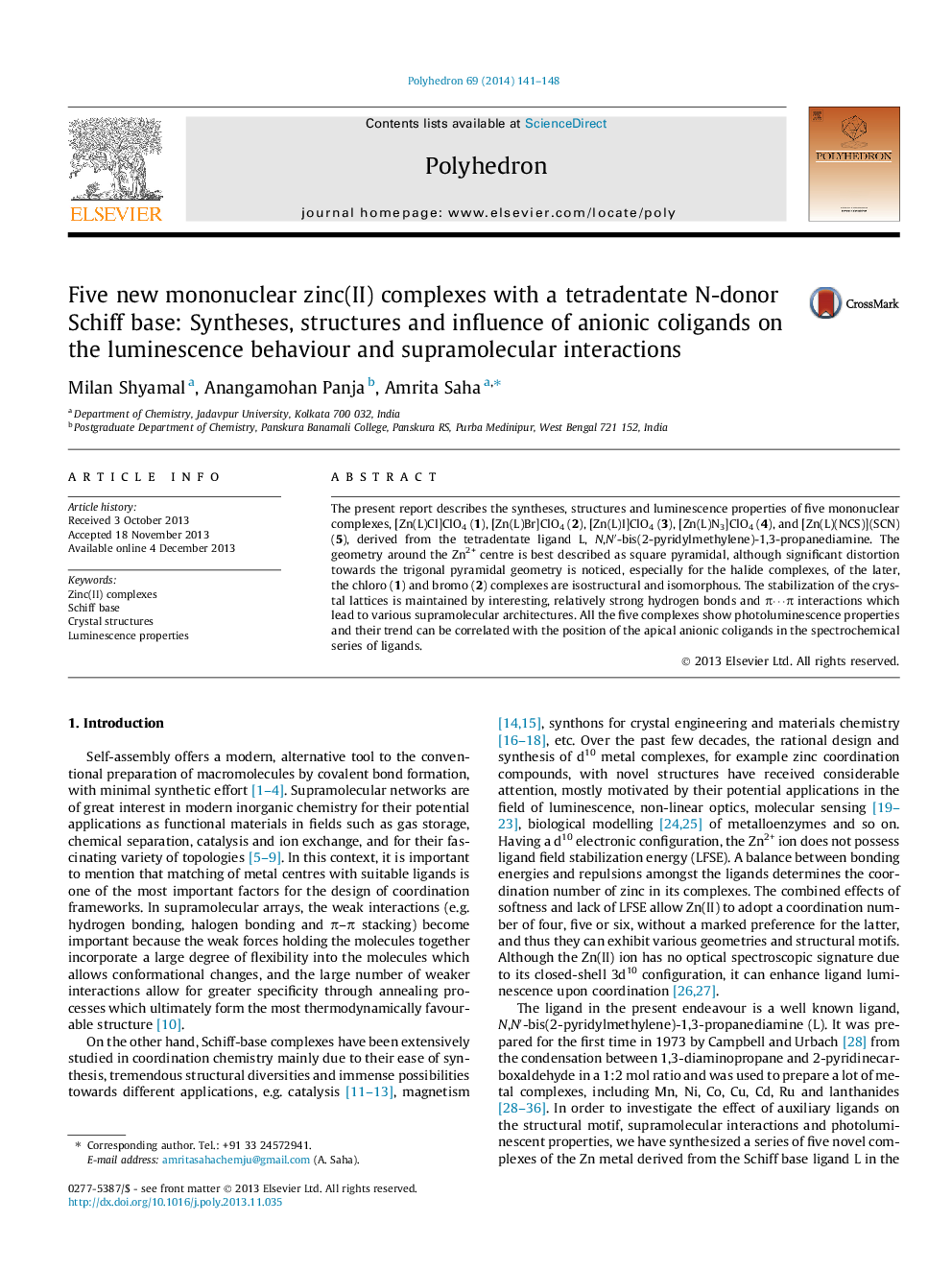| Article ID | Journal | Published Year | Pages | File Type |
|---|---|---|---|---|
| 1338071 | Polyhedron | 2014 | 8 Pages |
The present report describes the syntheses, structures and luminescence properties of five mononuclear complexes, [Zn(L)Cl]ClO4 (1), [Zn(L)Br]ClO4 (2), [Zn(L)I]ClO4 (3), [Zn(L)N3]ClO4 (4), and [Zn(L)(NCS)](SCN) (5), derived from the tetradentate ligand L, N,N′-bis(2-pyridylmethylene)-1,3-propanediamine. The geometry around the Zn2+ centre is best described as square pyramidal, although significant distortion towards the trigonal pyramidal geometry is noticed, especially for the halide complexes, of the later, the chloro (1) and bromo (2) complexes are isostructural and isomorphous. The stabilization of the crystal lattices is maintained by interesting, relatively strong hydrogen bonds and π⋯π interactions which lead to various supramolecular architectures. All the five complexes show photoluminescence properties and their trend can be correlated with the position of the apical anionic coligands in the spectrochemical series of ligands.
Graphical abstractFive mononuclear photoluminescent zinc(II) complexes have been synthesized from the tetradentate ligand L, N,N′-bis(2-pyridylmethylene)-1,3-propanediamine, and characterized by various spectroscopic techniques, elemental analysis and X-ray crystallography. The geometry around the Zn2+ centre is distorted square pyramidal, although a significant distortion towards the trigonal pyramidal geometry is noticed, especially for the halide complexes. The stabilization of the crystal lattices is maintained by interesting hydrogen bonds and π⋯π interactions which lead to various supramolecular architectures.Figure optionsDownload full-size imageDownload as PowerPoint slide
